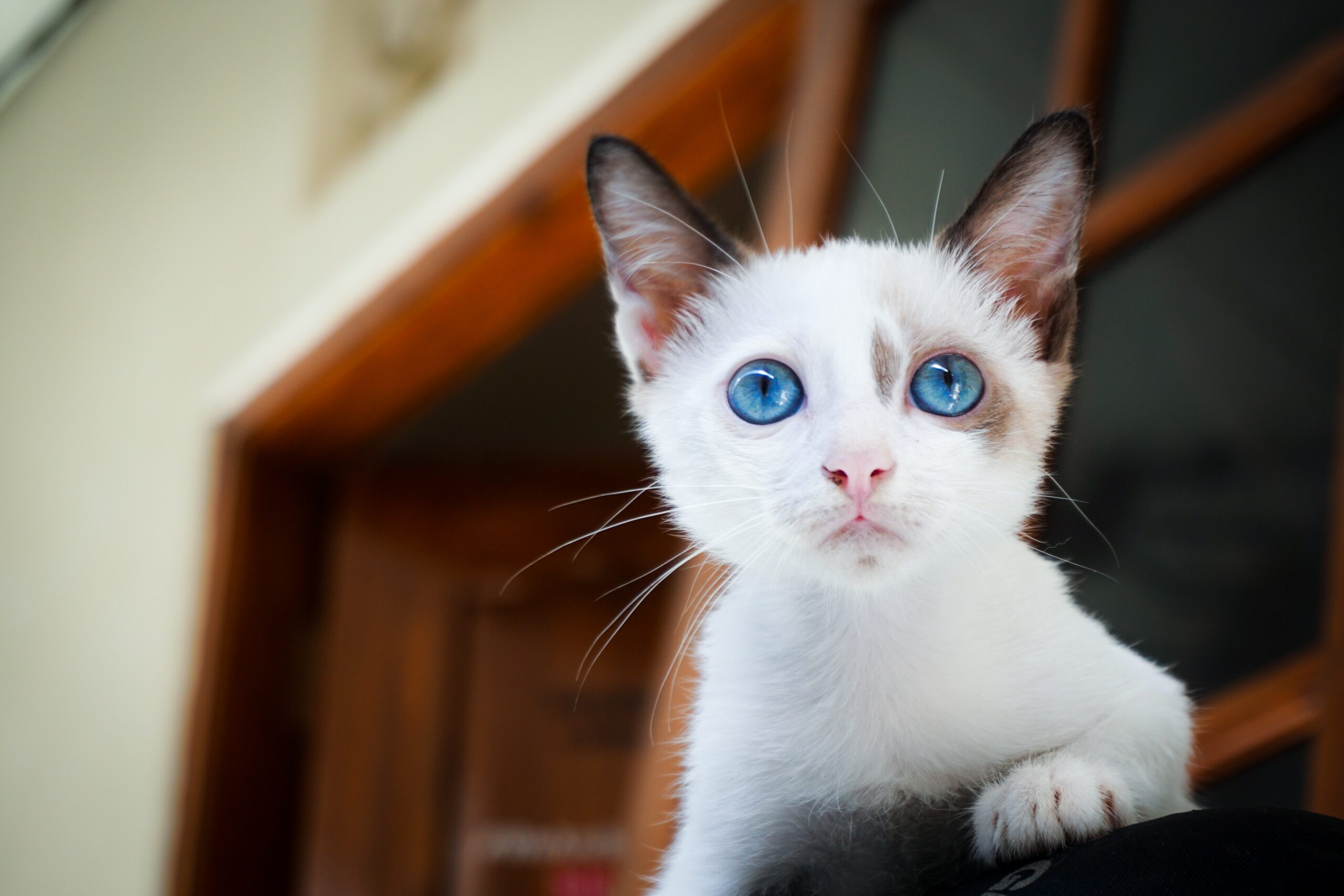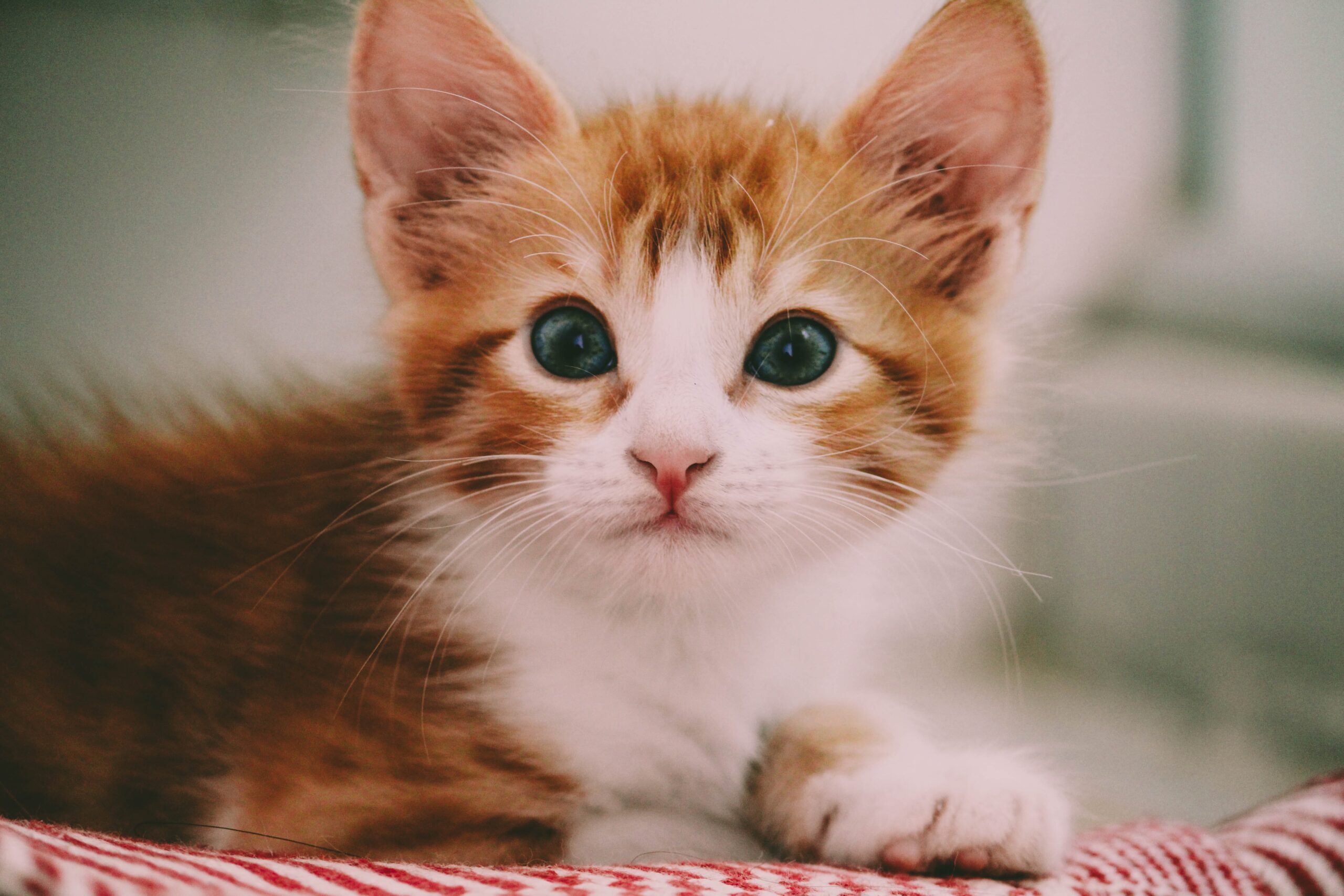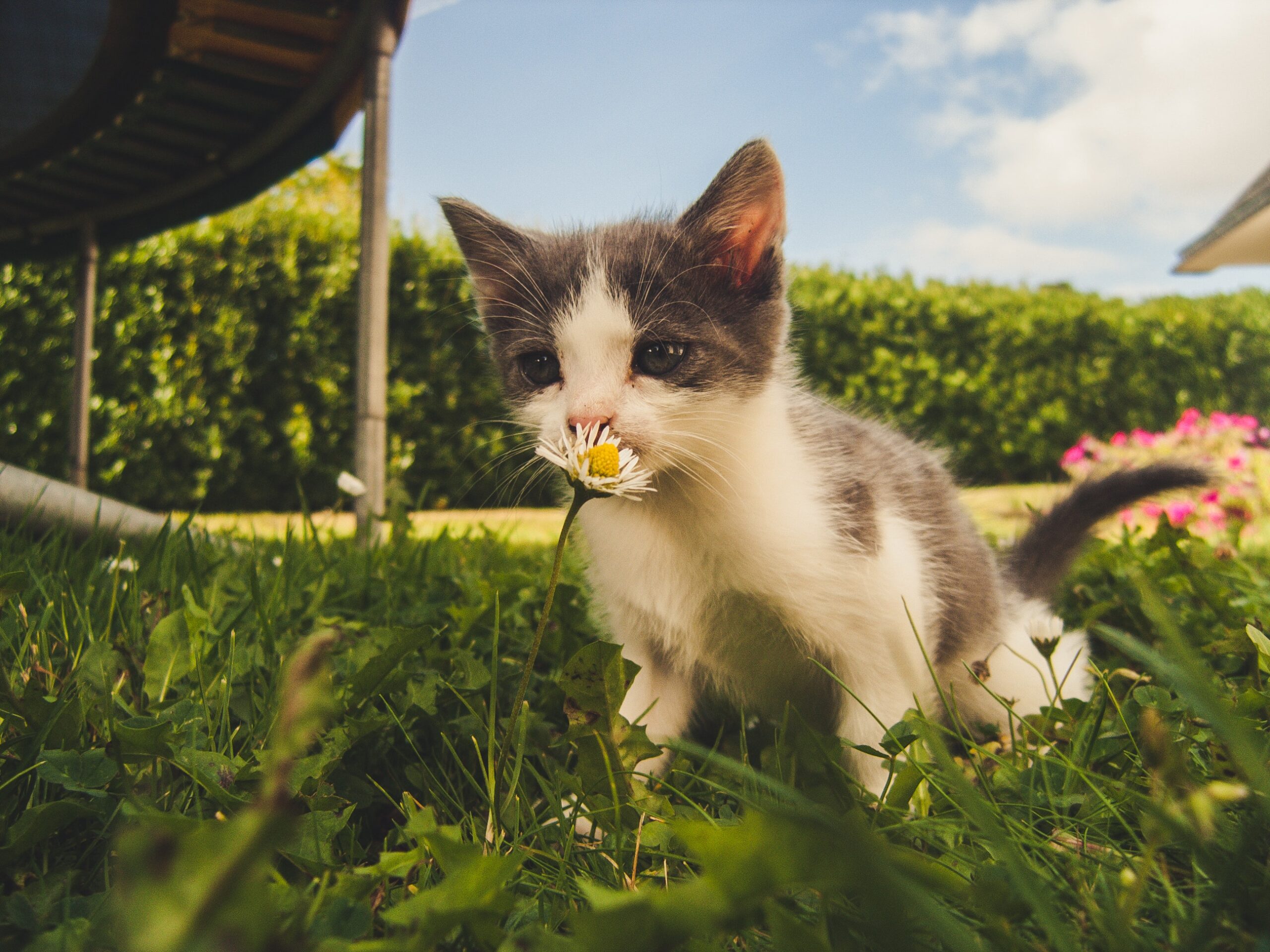Bringing a new kitten into your home is an exciting and joyous experience. However, it’s essential to create a safe and secure environment for your furry friend to explore and grow. Kitten-proofing your house is crucial to protect your new addition from potential hazards and accidents. Just like human babies, kittens are curious and can get into mischief, so taking proactive measures to ensure their safety is of utmost importance.
Kitten-proofing involves identifying potential dangers, securing hazardous items, and making necessary adjustments to minimize risks. By taking the time to evaluate your living space and implementing safety measures, you can create a space where your kitten can thrive without encountering harm. In this article, we will explore various steps and considerations to help you effectively kitten-proof your house, ensuring a safe and nurturing environment for your new feline companion.
Assessing Potential Hazards
Identify Poisonous Plants
One of the first steps in kitten-proofing your house is identifying and removing any toxic plants. Kittens are naturally curious and may chew on plants, which can lead to poisoning. Research common houseplants and outdoor plants to determine if they are safe for cats. Remove any toxic plants from areas accessible to your kitten or consider placing them out of reach.
Secure Hazardous Chemicals and Cleaning Products
Household chemicals and cleaning products pose a significant danger to kittens. Ensure that all chemicals, including cleaning supplies, pesticides, and automotive fluids, are stored securely in cabinets or high shelves. Consider using childproof locks to prevent your kitten from accessing these potentially harmful substances.
Safely Store Medications and Chemicals
Medications, both prescription and over-the-counter, should be stored in a secure location. Kittens can easily chew through pill bottles, exposing themselves to potential dangers. Keep all medications in cabinets or drawers that are out of your kitten’s reach. Similarly, keep personal care products, such as lotions and cosmetics, in sealed containers and away from areas accessible to your kitten.
Keep Small Objects and Choking Hazards Out of Reach
Kittens love to play and explore with their mouths, making small objects a potential choking hazard. Be vigilant about picking up small items, such as coins, buttons, rubber bands, or small toys, and ensure they are stored safely away from your kitten’s reach. Keep in mind that strings, ribbons, and dental floss can also be dangerous if ingested, so it’s important to keep them out of your kitten’s reach.
By assessing potential hazards in your home and taking proactive steps to remove or secure them, you can significantly reduce the risk of your kitten encountering dangerous substances or objects. This ensures a safer environment for them to explore and play in, promoting their overall well-being and minimizing the chances of accidents or injuries.
Protecting Electrical Cords and Outlets
Tuck Away Cords and Cables
Kittens have a tendency to chew on electrical cords, posing a risk of electrical shock or injuries. To protect your kitten and prevent damage to your electrical equipment, make a habit of tucking away cords and cables. Use cord organizers or cable management solutions to bundle and hide cords behind furniture or along walls. This not only keeps cords out of your kitten’s reach but also helps maintain a neater and more organized living space.
Use Cord Protectors and Cable Management Solutions
In addition to tucking away cords, you can further safeguard them by using cord protectors. These are plastic or rubber coverings that encase electrical cords, providing a barrier between the cord and your kitten’s curious teeth. Cord protectors can be particularly useful for cords that cannot be completely hidden or those located near your kitten’s play areas.
Cover Electrical Outlets with Safety Caps
Electrical outlets can be enticing to kittens, especially the small openings that resemble perfect chew toys. To prevent accidental shocks, it’s essential to cover all unused electrical outlets with safety caps. These inexpensive plastic covers can be easily inserted into the outlets, making them inaccessible to your kitten. Alternatively, consider using outlet covers that automatically slide shut when not in use.
By taking steps to protect electrical cords and outlets, you significantly reduce the risk of your kitten encountering electrical hazards. This not only keeps your kitten safe but also helps preserve your electronic devices and maintains a tidy living space. Remember, prevention is key when it comes to electrical safety for your curious and playful furry friend.
Securing Household Appliances and Furniture
Secure Large Appliances and Furniture Items
Large appliances and furniture can pose potential dangers to kittens if they are not properly secured. Take the time to ensure that heavy appliances, such as refrigerators, washers, dryers, or televisions, are securely anchored to the wall or floor. This prevents them from accidentally toppling over if your kitten climbs or jumps on them.
Block Access to Hazardous Areas
Certain areas of your home, such as laundry rooms or garages, may contain hazardous substances or equipment. It’s important to block access to these areas to prevent your curious kitten from encountering potential dangers. Consider using baby gates or other barriers to restrict access to off-limit rooms. Additionally, keep all hazardous substances, such as cleaning products or automotive supplies, securely stored in cabinets or high shelves.
Anchor Tall Furniture to Prevent Tipping Over
Tall furniture, such as bookshelves or cabinets, can pose a tipping hazard if your kitten tries to climb them. Secure these items to the wall using furniture anchors or brackets to prevent them from toppling over and causing harm. This not only protects your kitten but also ensures the safety of your belongings and helps maintain a stable living environment.
By securing household appliances and furniture, you create a safer living space for your kitten. It minimizes the risk of accidents, injuries, or damage caused by unstable or unsecured items. Remember to regularly check the stability of furniture and appliances, especially as your kitten grows and becomes more adventurous. Ensuring a secure environment gives you peace of mind and allows your kitten to explore their surroundings confidently.
Managing Access to Restricted Areas
Use Baby Gates and Barriers
Baby gates and barriers are valuable tools for managing your kitten’s access to certain areas of your home. They help create boundaries and restrict entry into potentially hazardous spaces, such as staircases, kitchens, or rooms with delicate or valuable items. Install sturdy baby gates at the top and bottom of staircases to prevent falls, and use barriers to block off rooms or areas where your kitten should not roam unsupervised.
Close Doors to Off-Limit Rooms
Closing doors to off-limit rooms is another effective way to prevent your kitten from accessing areas where they may encounter hazards or cause damage. Keep bedroom doors, bathrooms, or any other rooms you want to keep off-limits closed at all times. This ensures that your kitten stays in safe, designated areas of the house where you can closely monitor their activities.
Create Designated Safe Spaces for Your Kitten
While it’s important to restrict access to certain areas, it’s equally important to provide your kitten with designated safe spaces where they can relax, play, and feel secure. Set up a comfortable and cozy space specifically for your kitten, complete with a soft bed, toys, and a scratching post. This helps establish a sense of ownership and provides them with a retreat when they need some alone time or want to engage in activities without any potential hazards nearby.
Managing your kitten’s access to restricted areas helps prevent accidents and reduces the chances of them getting into trouble. By using baby gates, closing doors, and creating safe spaces, you can create a controlled environment where your kitten can explore and play safely. This approach also helps in training and reinforcing positive behaviors, while minimizing the risk of injury or damage to your home.
Addressing Potential Dangers in the Kitchen
Store Food Properly to Prevent Ingestion of Harmful Substances
The kitchen is filled with tempting scents and tasty treats that may attract your curious kitten. To keep them safe, it’s crucial to store food properly and prevent access to potentially harmful substances. Store all human food securely in cabinets or the refrigerator, making sure containers are tightly sealed. Keep garbage cans with food scraps covered and out of your kitten’s reach to avoid ingestion of spoiled or toxic foods.
Secure Trash Cans and Keep Them Tightly Closed
Trash cans can be a source of danger for kittens, as they may contain spoiled food, sharp objects, or potentially toxic substances. Invest in trash cans with secure lids or use locking mechanisms to prevent your kitten from rummaging through the trash. Consider keeping the trash can in a closed-off area or use baby-proofing techniques, such as installing cabinet locks, to restrict access to the trash.
Monitor the Stove and Oven to Prevent Accidental Burns
Kittens are naturally curious and may be attracted to the warmth of the stove or oven. Always keep a close eye on your kitten when you are cooking to prevent accidents or burns. Use back burners whenever possible and turn pot handles inward to minimize the risk of your kitten accidentally knocking them over. Consider using stove knob covers to prevent your kitten from accidentally turning on the burners.
Taking precautions in the kitchen ensures that your kitten is protected from potential hazards and accidents. By properly storing food, securing trash cans, and closely monitoring cooking areas, you create a safer environment where your kitten can explore without encountering dangers. Remember, the kitchen can be a particularly hazardous area, so it’s important to be extra vigilant when it comes to the safety of your furry friend.
Providing Safe and Engaging Toys for Your Kitten
Choose Age-Appropriate Toys
To keep your kitten entertained and prevent them from engaging in destructive behavior, provide them with a variety of age-appropriate toys. Kittens have an instinctual need to play and explore, so offering toys that stimulate their natural behaviors, such as hunting, pouncing, and scratching, is essential. Opt for interactive toys, feather wands, puzzle toys, and soft plush toys that are specifically designed for kittens.
Avoid Small or Easily Swallowed Objects
When selecting toys for your kitten, ensure that they do not contain small parts or components that can be easily swallowed or pose a choking hazard. Avoid toys with strings, ribbons, or small detachable pieces that could be ingested. Opt for sturdy toys made from safe materials that can withstand your kitten’s playful nature without breaking apart.
Provide Scratching Posts and Appropriate Outlets for Energy
Kittens have a natural instinct to scratch, and it’s important to provide them with appropriate outlets for this behavior. Invest in a sturdy scratching post or cat tree that allows your kitten to scratch and stretch their muscles without damaging your furniture. Place the scratching post in an accessible area where your kitten spends time, and encourage them to use it through positive reinforcement and rewards.
Rotate and Refresh Toys Regularly
To keep your kitten engaged and prevent boredom, it’s essential to rotate and refresh their toys regularly. Kittens can quickly lose interest in toys they’ve been exposed to for an extended period. Introduce new toys periodically and put away a few toys at a time to keep a sense of novelty. By rotating their toys, you stimulate their curiosity and provide mental and physical stimulation.
By providing safe and engaging toys for your kitten, you promote their physical and mental well-being while redirecting their energy toward appropriate outlets. This not only helps prevent destructive behavior but also enhances their overall happiness and contentment. Remember to supervise your kitten during playtime and remove any damaged or unsafe toys from their environment.
Supervising and Monitoring Your Kitten
Active Supervision During Playtime
Supervision is key when it comes to ensuring the safety of your kitten. During playtime, actively engage with your kitten, keeping a close eye on their actions and behaviors. This allows you to intervene if they get into potentially dangerous situations or exhibit inappropriate behavior. By actively supervising playtime, you can redirect their attention, teach them boundaries, and prevent accidents from occurring.
Regular Health Check-Ups and Vaccinations
Regular visits to the veterinarian are essential to maintaining your kitten’s health and well-being. Schedule routine check-ups and vaccinations as recommended by your veterinarian to ensure that your kitten is protected against common diseases and parasites. Regular examinations also allow the vet to identify any potential health issues early on and provide appropriate treatment.
Create a Safe and Secure Outdoor Environment
If you plan to let your kitten explore the outdoors, it’s important to create a safe and secure environment for them. Ensure that your outdoor space is fenced and free from potential dangers, such as toxic plants, sharp objects, or openings where your kitten could escape. Supervise your kitten when they are outside to prevent them from encountering hazards or getting into trouble.
Monitor Their Behavior and Well-Being
Pay close attention to your kitten’s behavior, eating habits, and overall well-being. Monitor any changes in their behavior, such as sudden aggression, lethargy, or loss of appetite, as these could be signs of underlying health issues. Regularly groom your kitten to check for any abnormalities, such as skin irritations, fleas, or ticks. Being attentive to your kitten’s needs and behavior helps you identify potential problems early and seek appropriate veterinary care.
By actively supervising and monitoring your kitten, you can ensure their safety and well-being. Regular veterinary care, along with close observation of their behavior and environment, allows you to address any concerns promptly and provide a nurturing and secure environment for your furry friend. Remember, your attentive care and watchful eye contribute to a happy and healthy life for your beloved kitten.
Introducing Safe Spaces and Vertical Exploration
Create a Designated Safe Space
It’s important to provide your kitten with a designated safe space where they can retreat, relax, and feel secure. This space can be a specific room or an area within a room that is set up with your kitten’s essentials, such as a comfortable bed, water, litter box, and some toys. Ensure that the safe space is free from potential hazards and provides a sense of privacy for your kitten to retreat to when they need some alone time.
Offer Vertical Exploration Opportunities
Kittens are naturally curious and enjoy exploring their surroundings from different vantage points. To satisfy their climbing instincts and provide mental stimulation, offer vertical exploration opportunities. Invest in a cat tree or install shelves and perches at different heights. This allows your kitten to climb, jump, and observe their environment from a safe and elevated position. Ensure that these structures are securely anchored to prevent any accidents.
Provide Secure Window Perches or Catios
Many kittens are fascinated by the outside world and enjoy watching birds, squirrels, or other activities happening through the windows. Install secure window perches or set up a catio (an enclosed outdoor space for cats) where your kitten can safely enjoy the sights and sounds of the outdoors. Make sure windows are securely screened and inaccessible to prevent any accidental falls or escapes.
Eliminate Toxic Plants and Hazardous Substances
Some plants can be toxic to cats if ingested. To keep your kitten safe, identify and remove any toxic plants from your home or place them out of your kitten’s reach. Additionally, be mindful of other hazardous substances, such as cleaning products or chemicals, that could be harmful if consumed. Store these items securely in cabinets or high shelves to prevent accidental access.
By creating safe spaces and offering vertical exploration opportunities, you enhance your kitten’s environment and promote their overall well-being. Providing them with a designated safe space and access to elevated perches satisfies their natural instincts and helps prevent boredom and destructive behavior. By eliminating toxic plants and securing hazardous substances, you minimize the risk of your kitten encountering harmful substances. A safe and enriched environment sets the stage for a happy and contented life for your furry companion.
Continued Training and Socialization
Ongoing Training for Desired Behaviors
Training is an ongoing process that helps shape your kitten’s behavior and instill good habits. Consistency and positive reinforcement are key when training your kitten. Continue to reinforce desired behaviors, such as using the litter box, scratching on appropriate surfaces, and responding to cues or commands. Use rewards, such as treats or praise, to motivate and encourage your kitten during training sessions. By consistently reinforcing positive behaviors, you establish a strong foundation for their well-being and safety.
Proper Socialization with People and Animals
Socialization plays a vital role in your kitten’s development and helps them become well-adjusted and confident cats. Introduce your kitten to a variety of people, including family members, friends, and visitors, to help them become comfortable and friendly around different individuals. Additionally, gradually expose your kitten to other animals in a controlled and supervised manner to promote positive interactions and prevent fear or aggression.
Address Behavioral Issues Promptly
If you notice any behavioral issues or concerns with your kitten, address them promptly. Common behavioral issues in kittens may include excessive scratching, aggression, or inappropriate chewing. Consult with a veterinarian or professional animal behaviorist to address these issues effectively. They can provide guidance, behavior modification techniques, and strategies to help you manage and correct any problem behaviors.
Provide Mental Stimulation and Environmental Enrichment
Kittens are highly intelligent and curious creatures that thrive on mental stimulation and environmental enrichment. Provide them with interactive toys, puzzle feeders, and regular playtime sessions to keep their minds engaged. Rotate and introduce new toys to prevent boredom and stimulate their natural hunting instincts. Engage in interactive play sessions to keep them physically active and mentally stimulated.
By continuing training and socialization, you ensure that your kitten grows into a well-behaved and socially confident cat. Addressing behavioral issues promptly helps prevent the development of negative habits and promotes a harmonious relationship between you and your feline companion. Providing mental stimulation and environmental enrichment keeps their minds sharp and prevents boredom, leading to a happy and fulfilled life for your kitten.
Remember, each kitten is unique, so tailor your training and socialization approach to their individual needs and personalities. With patience, consistency, and love, you can help your kitten grow into a well-rounded and happy member of your family.










